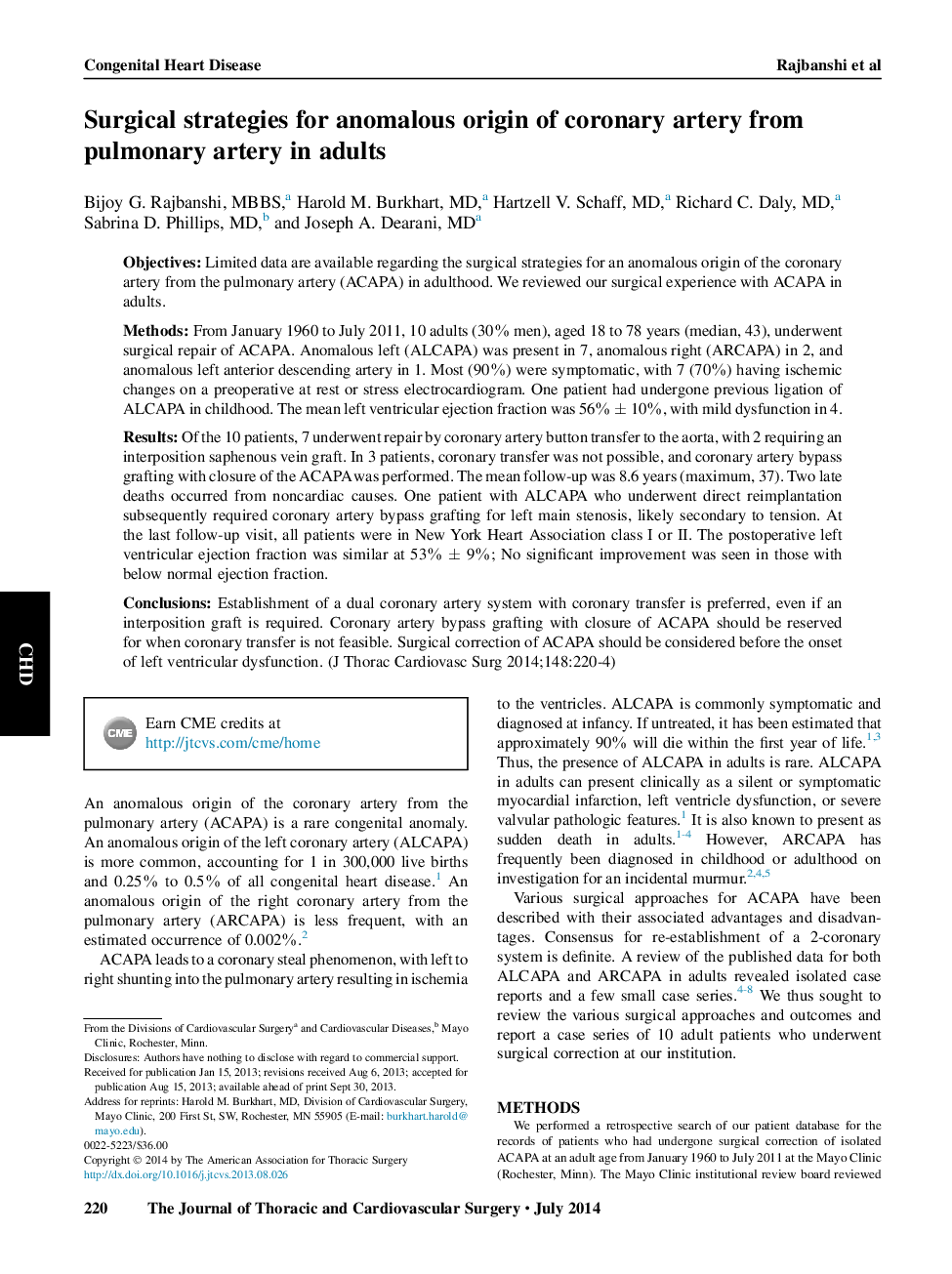| کد مقاله | کد نشریه | سال انتشار | مقاله انگلیسی | نسخه تمام متن |
|---|---|---|---|---|
| 2980769 | 1578609 | 2014 | 5 صفحه PDF | دانلود رایگان |
ObjectivesLimited data are available regarding the surgical strategies for an anomalous origin of the coronary artery from the pulmonary artery (ACAPA) in adulthood. We reviewed our surgical experience with ACAPA in adults.MethodsFrom January 1960 to July 2011, 10 adults (30% men), aged 18 to 78 years (median, 43), underwent surgical repair of ACAPA. Anomalous left (ALCAPA) was present in 7, anomalous right (ARCAPA) in 2, and anomalous left anterior descending artery in 1. Most (90%) were symptomatic, with 7 (70%) having ischemic changes on a preoperative at rest or stress electrocardiogram. One patient had undergone previous ligation of ALCAPA in childhood. The mean left ventricular ejection fraction was 56% ± 10%, with mild dysfunction in 4.ResultsOf the 10 patients, 7 underwent repair by coronary artery button transfer to the aorta, with 2 requiring an interposition saphenous vein graft. In 3 patients, coronary transfer was not possible, and coronary artery bypass grafting with closure of the ACAPA was performed. The mean follow-up was 8.6 years (maximum, 37). Two late deaths occurred from noncardiac causes. One patient with ALCAPA who underwent direct reimplantation subsequently required coronary artery bypass grafting for left main stenosis, likely secondary to tension. At the last follow-up visit, all patients were in New York Heart Association class I or II. The postoperative left ventricular ejection fraction was similar at 53% ± 9%; No significant improvement was seen in those with below normal ejection fraction.ConclusionsEstablishment of a dual coronary artery system with coronary transfer is preferred, even if an interposition graft is required. Coronary artery bypass grafting with closure of ACAPA should be reserved for when coronary transfer is not feasible. Surgical correction of ACAPA should be considered before the onset of left ventricular dysfunction.
Journal: The Journal of Thoracic and Cardiovascular Surgery - Volume 148, Issue 1, July 2014, Pages 220–224
